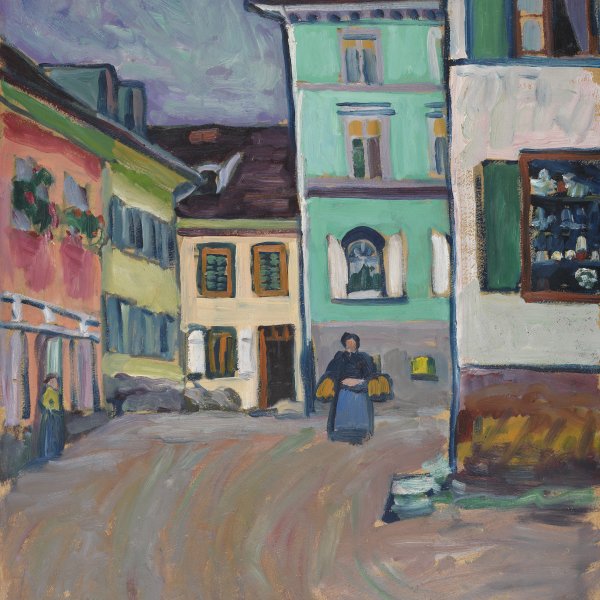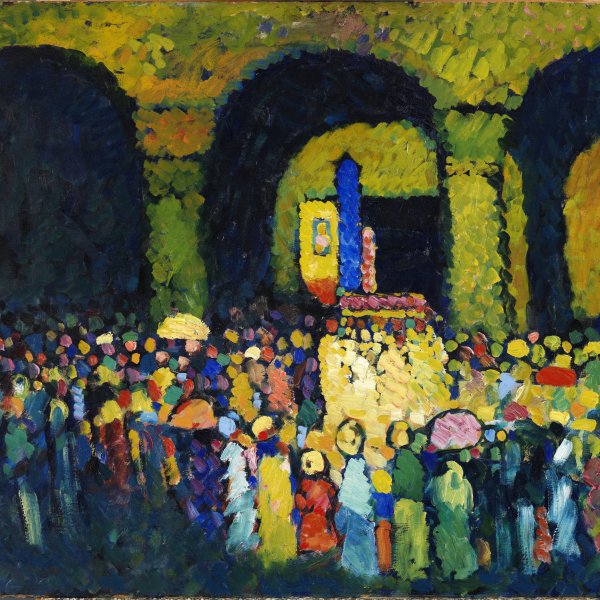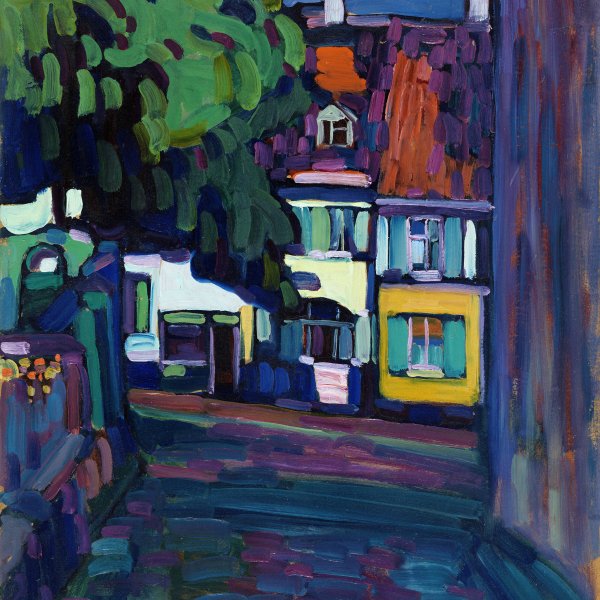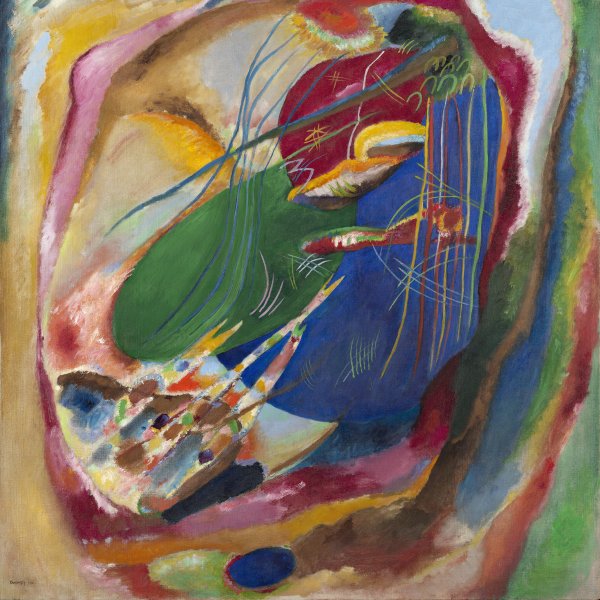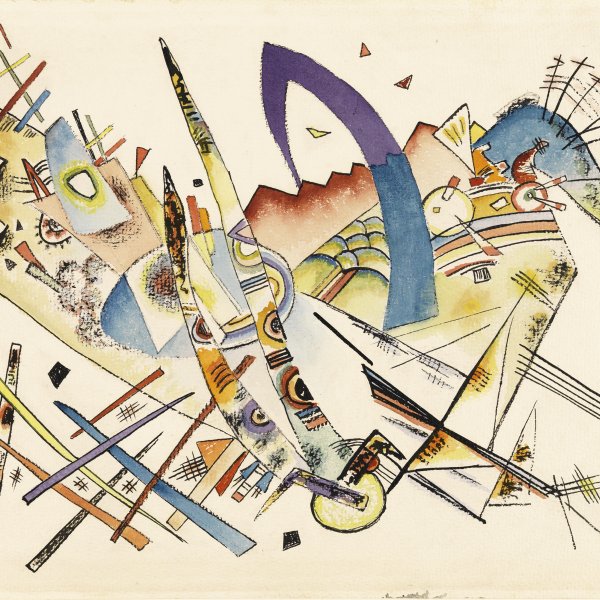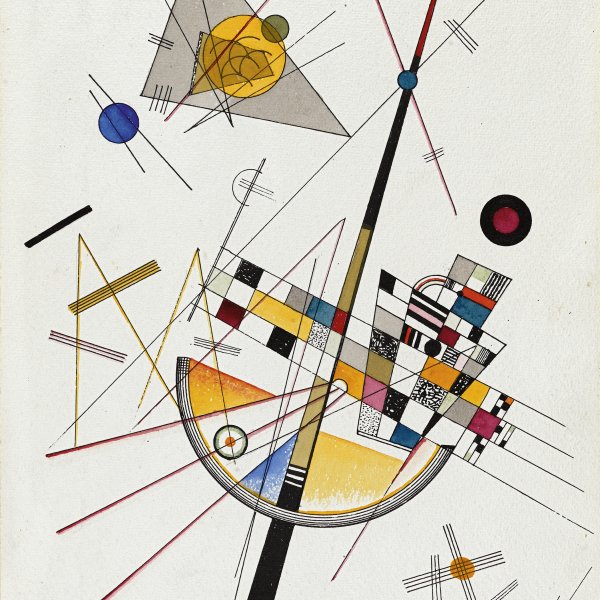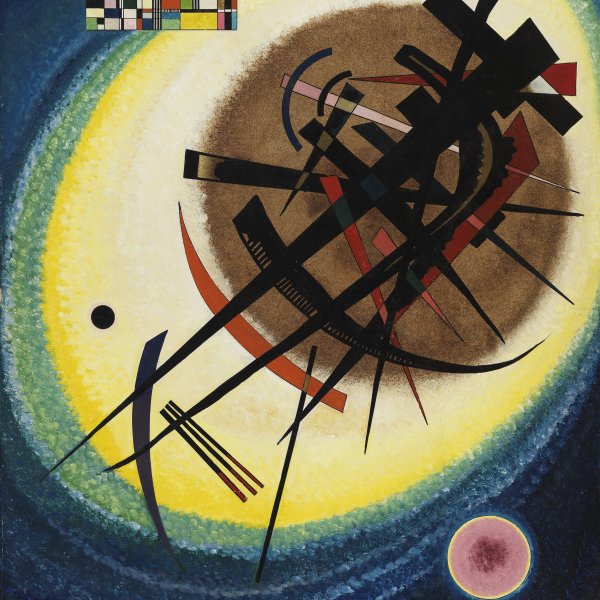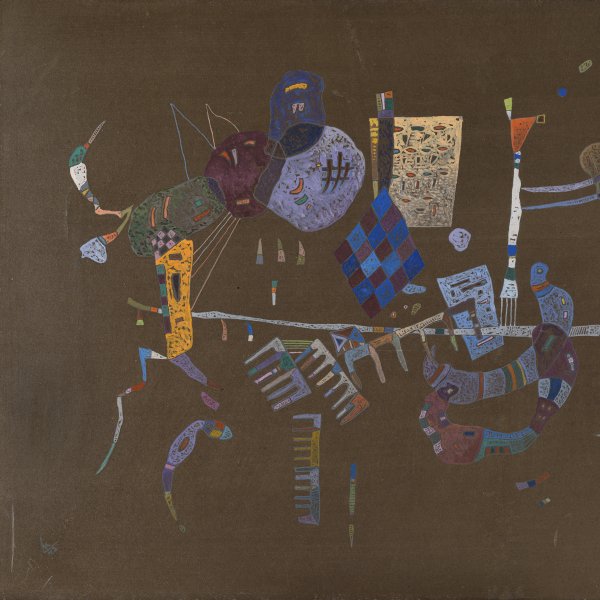Wassily Kandinsky
The Russian-born painter Wassily Kandinsky was one of the pioneers of twentieth-century abstract art. He studied law and economics at Moscow University, where he became a lecturer after graduating in 1892. In 1896 he moved to Munich and began studying art at the painter Anton Ažbé’s academy and Franz von Stuck’s studio. A few years later, in 1901, he was one of the founders of the Phalanx artists’ association. There he met Gabriele Münter, who went on to be his artistic and romantic partner until the outbreak of the First World War. In 1904 Kandinsky made the first of several trips around Europe and North Africa with Münter and settled in Munich again in 1908. During the following years he divided his time between the Bavarian capital and Murnau, a village in the foothills of the Alps whose landscapes were the subject of many of his paintings and where he developed a keen interest in folk art. From 1909 to 1911 his painting gradually underwent a profound change based on the expressiveness of colour and forms, and his pursuit of an analogy with music culminated in fully abstract works.
Meanwhile, in 1909, together with Münter, Alexej von Jawlensky and Marianne von Werefkin, among others, Kandinsky established the New Artists’ Association of Munich [Neue Künstlervereinigung München], considered to be the first association of Munich Expressionists. In 1911, along with Franz Marc and Münter, he founded The Blue Rider [Der Blaue Reiter], which staged its first exhibition at the Thannhauser gallery in Munich at the end of the year, around the time he published his seminal essay Concerning the Spiritual in Art. The first and only issue of The Blue Rider almanac also came out in May 1912, marking a key episode in twentieth-century artistic literature. In it Kandinsky called for an art that did not reflect appearances but the artist’s own inner necessity.
When the First World War broke out Kandinsky returned to Russia, where he remained until the end of 1921. Following the success of the October Revolution in 1917, he performed important work as a member of the People’s Commissariat for Public Instruction [Narkompros] and was one of the founders of the Institute of Artistic Culture [INKhUK], becoming its first director. In 1921 Kandinsky returned to Germany and joined the faculty of the Bauhaus in Weimar, where he taught the mural painting workshop, among other classes. He continued to hold his teaching post after the school moved to Dessau in 1925 and also during its short time in Berlin, where it relocated in 1932. In that period his painting adopted a more severe language dominated by geometric abstraction with constructivist features. When the institution was closed down by the Nazi regime in 1933, Kandinsky went to live in Neuilly-sur-Seine in the suburbs of Paris, where he worked until the end of his life.

